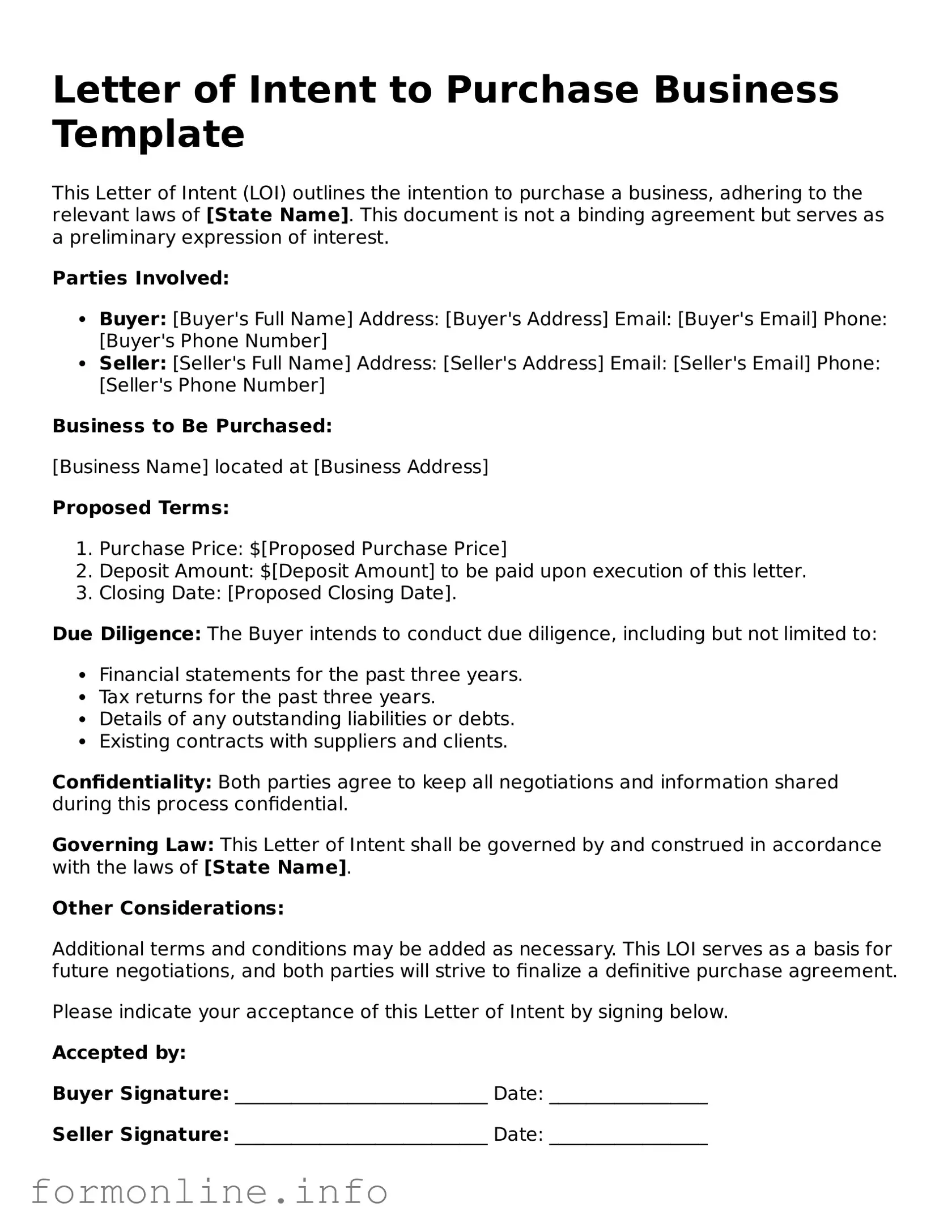Letter of Intent to Purchase Business Template
This Letter of Intent (LOI) outlines the intention to purchase a business, adhering to the relevant laws of [State Name]. This document is not a binding agreement but serves as a preliminary expression of interest.
Parties Involved:
- Buyer: [Buyer's Full Name]
Address: [Buyer's Address]
Email: [Buyer's Email]
Phone: [Buyer's Phone Number]
- Seller: [Seller's Full Name]
Address: [Seller's Address]
Email: [Seller's Email]
Phone: [Seller's Phone Number]
Business to Be Purchased:
[Business Name] located at [Business Address]
Proposed Terms:
- Purchase Price: $[Proposed Purchase Price]
- Deposit Amount: $[Deposit Amount] to be paid upon execution of this letter.
- Closing Date: [Proposed Closing Date].
Due Diligence: The Buyer intends to conduct due diligence, including but not limited to:
- Financial statements for the past three years.
- Tax returns for the past three years.
- Details of any outstanding liabilities or debts.
- Existing contracts with suppliers and clients.
Confidentiality: Both parties agree to keep all negotiations and information shared during this process confidential.
Governing Law: This Letter of Intent shall be governed by and construed in accordance with the laws of [State Name].
Other Considerations:
Additional terms and conditions may be added as necessary. This LOI serves as a basis for future negotiations, and both parties will strive to finalize a definitive purchase agreement.
Please indicate your acceptance of this Letter of Intent by signing below.
Accepted by:
Buyer Signature: ___________________________
Date: _________________
Seller Signature: ___________________________
Date: _________________
